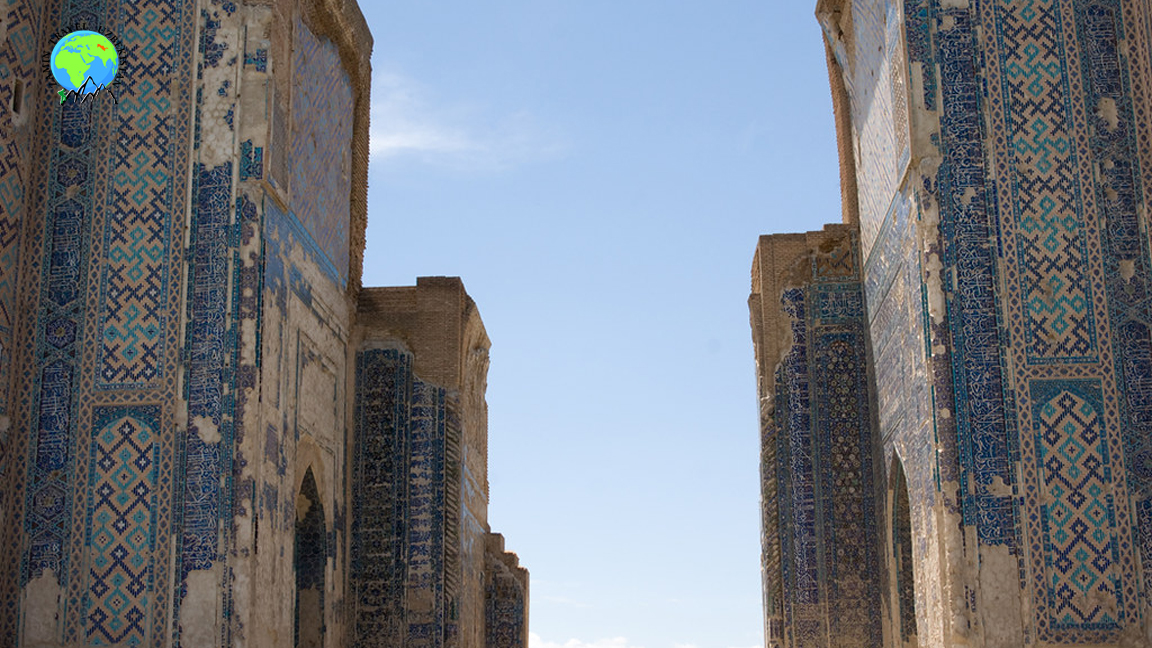


Several monumental buildings were built in Shahrisabz during the Timurid period. The most beautiful of them is the Ak-Saray Palace. Amir Timur is said to have built Shahrisabz - the second capital of his empire, no less expensive than Samarkand. Construction of the palace began in 1380 and lasted more than 25 years. It is known that architects and craftsmen from Khorazm, an area that had recently been subjugated by Timur, were involved in the construction of the palace. Amir Timur spent a lot of money on his project. His buildings should be the largest and the best in the world. It was not without intent that an inscription on the portal of his palace reads: “Those who doubt my strength and generosity should see it in my building.” Scientists have succeeded in reconstructing the architecture and the artistic design of the palace to reconstruct. Although Ak-Saray translates as “White Palace”, the Uzbek language interprets the word “white” as noble, royal, when referring to a palace name. The dimensions and size of the building has always surprised visitors at all times. The inner courtyard alone was 820 meters long and 410 meters wide. The height of the main portal is crowned with arched battlements, was 70 meters - which is the size of a 20-story building. The two corner towers were no less than 100 meters high, with an arch span at the entrance of over 70 meters. According to the notes of the diplomat Ruy Gonzáles de Clavijo, whom the King of Castile sent to the court of Amir Timur, wrote: “I went through a very wide and high door, decorated with gold and blue patterns on glazed tiles, rich and nicely edited. On the door there was a drawing of a lion and a sun, which are the arms of the Lord of Samarkand. The door led to a large reception room ”. The luxury of the palace's decoration was finely finished with flooring covered with tiles, some of which were found by archaeologists during excavations. The palace performed several functions: it was a place for recreation and entertainment for the royal family and an administrative center for the conduct of state affairs. State Council meetings were held in the center of the courtyard. Tavajibeks and Divanbeks - the smaller halls on either side, were used for the meetings of the royal advisors. The palace housed richly decorated and magnificently crafted rooms for a harem. A shady garden with a swimming pool was laid out with patterned tiles in front of the harem. The spacious water basins were filled with water from the main line from the nearby mountains. The radiant exterior decoration, the walls and domes of the Ak-Saray Palace still arouse great admiration today. Large geometric ornaments on its facades are decorated with dark and light blue glazed bricks. The glittering, polished brick background gives the building a special picturesque grandeur. The portal niche is decorated with elegant mosaics and carved majolica as well as quotations from the Koran. The walls of the palace as well as the palace square were decorated with tile mosaics - a combination of blue, green, yellow and red colors. Under the decorative tiles - "Sultan is the shadow of Allah" - one can find the inscription with the name of the craftsman Makhmud Yusuf Tebrizi and the date on which the decorative work was completed. The colossal corner tower was built in 1395 and is decorated with a saying in Kufi script. At the end of the 16th century, Shahrisabz rebelled against the rule of the Sheibanid dynasty. After the occupation of the city, Abdulla II Ak-Saray decided to demolish other buildings from the Timurid dynasty. The area of the former royal gardens was equipped with so-called tashkari - backyards with rooms for bodyguards, servants and guards. Only the huge extensions of the portal arch still show the former splendor, which symbolizes the power of the Amir Timur state.